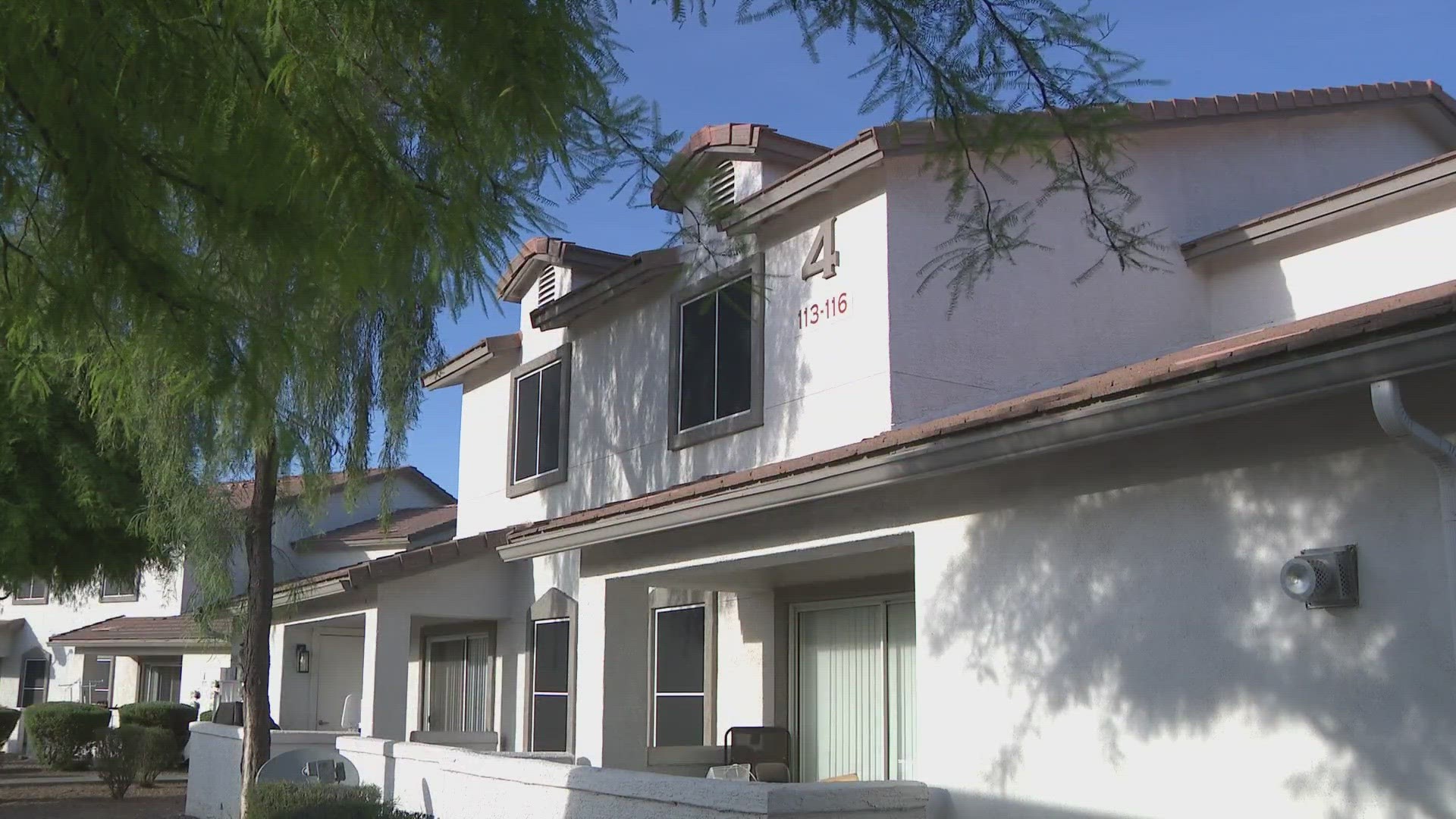PEORIA, Ariz. — The Ironwood Estates served as a lifeline for Lakrysia Allen.
“Me and my children had come out of a situation of being homeless for 18 months. I had nowhere to go,” Allen said. "It brought security, it brought stability, it brought hope to me and my family."
The Ironwood Estates has been affordable housing for folks like Ms. Allen for years.
The development was built as part of the Low Income Housing Tax Credit (LIHTC) program, where the government helps pay for the development if the property is kept affordable.
That means the complexes often charge rent according to a renter's income, not the market rate.
However, recently prices have been going up for Allen and her neighbors.
"They said we are not doing any more low-income, and the rent is going up," Allen said. "From $1,500 to $2,400."
The reason? After 19 years, Ironwood Estates no longer has to keep its apartments affordable.
What is the low-income housing tax credit?
"The Low Income Housing Tax Credit Program was implemented in 1986, and it is a way to have a private investment in public housing," said the Arizona Department of Housing Director Deputy Director Ruby Dhillon.
According to Dhillon, the tax credit can cover up to 80% of a project. To take advantage of the credit, developers must agree to keep their units affordable for more than a decade. Most agreements want the properties to stay at affordable rates for 30 years. However, there is a loophole in the federal tax code that offers developments an out after the 15th year.
Dhillon said at year 14, developments can start the process of going to market rates.
That process is complex and takes time. A complex must do multiple mandated things, including marketing the property to going through a deregulation period. After going through all the mandated periods, a complex in Arizona can transition to market rates after 19 years.
Take Ironwood Estates as an example. The development went through a marketing period that commenced in 2018. Then Ironwood Estates went through a three-year "deregulation period." On Dec. 6, 2022, that deregulation period ended and the complex's 40 affordable units no longer had to play by the old rules allowing rents to skyrocket as leases came up.
"When you are transferring from an affordable housing community to market-rate rents, you are going to see a big jump," Dhillon said. "It definitely is happening. It’s happing very prevalently right now."
“Each state is looking at its own qualified allocation plan to see what they can do to kinda stopgap this loophole that is in the code," Dhillon said.
So what can be done?
Arizona's plan is a point system.
Arizona uses a point system to help decide who gets the tax credit.
Competition for the tax credit is intense. A little more than a decade ago, the Housing Department changed its point system, offering more points to developers if they waived the right to become affordable after 15 years.
Since then, every developer awarded a Low Income Housing Tax Credit has decided to waive their ability to transition to market rates after 15 years.
Arizona should reap the benefit in a few years but there are still complexes in the meantime that will transition to market-rate apartments.
Those complexes are below:
Up to Speed
Catch up on the latest news and stories on the 12News YouTube channel. Subscribe today.

